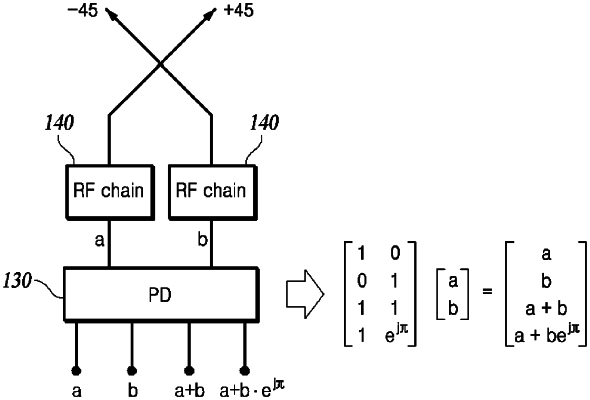| CPC H04B 7/0697 (2013.01) [H04B 7/0469 (2013.01); H04B 7/10 (2013.01); H04B 7/0408 (2013.01); H04L 5/0007 (2013.01)] | 10 Claims |

|
1. A spatial multiplexing method using polarization in a multi-beam system, the method comprising:
determining different phases for forming a first beam and a second beam spatially adjacent to each other, and determining different orthogonal polarizations to be applied to the first beam and the second beam, wherein the orthogonal polarization to be applied to the first beam is different from the orthogonal polarization to be applied to the second beam;
precoding a signal so that the first beam and the second beam have the determined different phases; and
converting polarization of the precoded signal so that the first beam and the second beam have the determined different orthogonal polarizations,
wherein the converting of the polarization of the precoded signal comprises converting the polarization of the precoded signal into orthogonal cross-polarization (±45 degrees) and orthogonal vertical/horizontal polarization using the following equation:
 where a and b represent any one of the orthogonal cross-polarization (±45 degrees) and the orthogonal vertical/horizontal polarization, and a+b and a+bejπ represent the other one of the orthogonal cross-polarization (±45 degrees) and the orthogonal vertical/horizontal polarization.
|